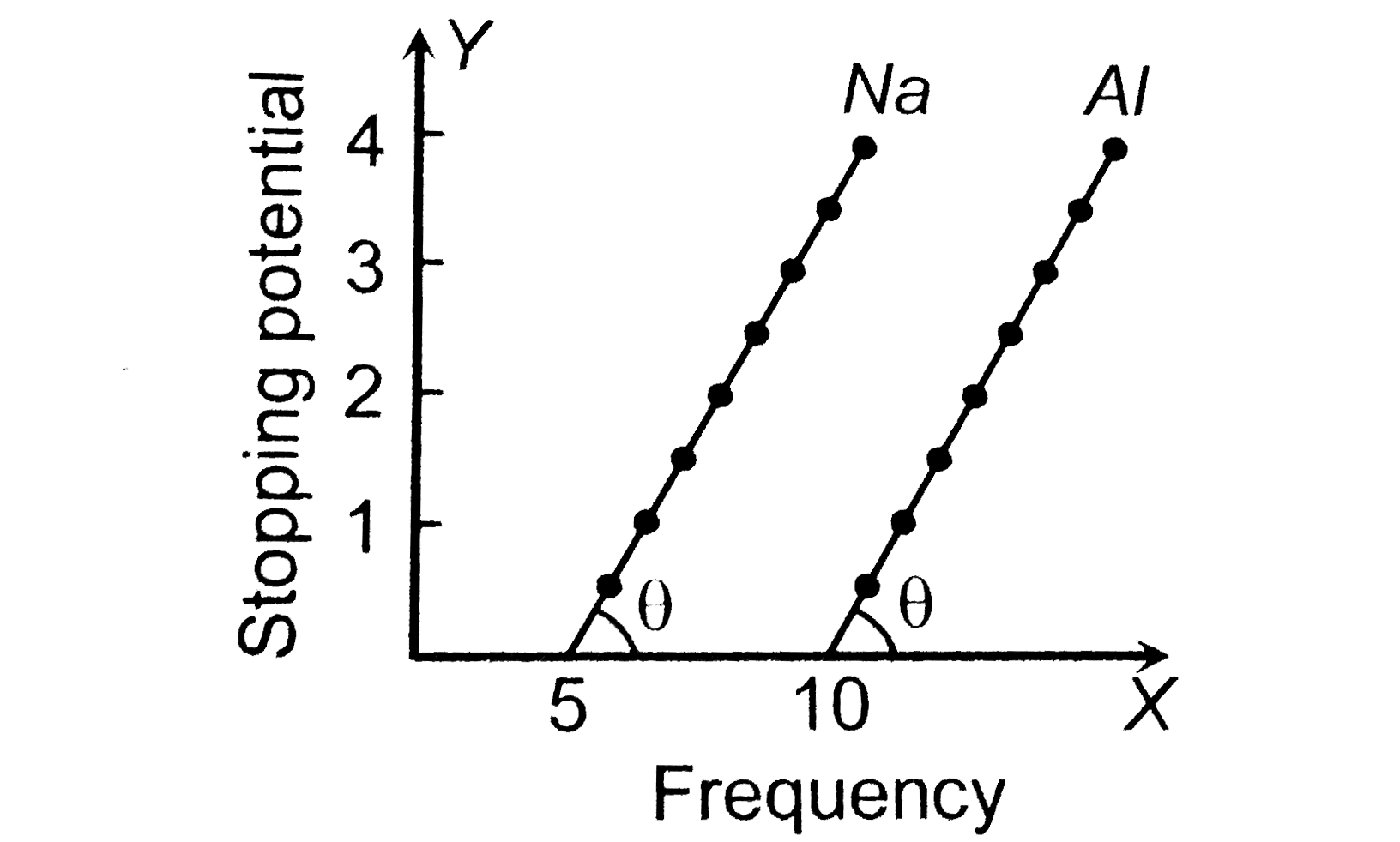Complete Solutions to dpp 3.2 of chapter ELECTRON,PHONTS,PHOTOELECTRIC EFFECT & X-RAYS of Class 12 book with complete answers and questions
| Class 12 | PHYSICS |
| Chapter | ELECTRON,PHONTS,PHOTOELECTRIC EFFECT & X-RAYS |
| CENGAGE PHYSICS DPP | dpp 3.2 |
| Number Of Questions | 15 |
| Academic Year | 2023-24 |
Which one of the following is true in photoelectric emission
View SolutionIf intensity of incident light is increased in photo electric effect then which of the following is true ?
View SolutionThe cathode of a photoelectric cell is changed such that the work function changes from `W_(1)` to `W_(2) ( W_(2) gt W_(1))`. If the current before and after changes are `I_(1)` and `I_(2)`, all other conditions remaining unchanged, then (assuming `(hvgtW_(2))`
View SolutionFor a photoelectric cell the graph showing the variation of cut of voltage `(V_(0))` with frequency (v) of incident light is best represented by

View SolutionThe curves `(a) , (b) , ( c )` and `(d)` show the variation between the applied potential difference `(V)` and the photoelectric current `(i)` , at two different intensities of light `(I_(1) gt I_(2))`. In which figure is the correct variation shown ?
View SolutionA photo-cell is illuminated by a source of light, which is placed at a distance d from the cell. If the distance become d/2, then number of electrons emited per second will be : -
View SolutionFrom the figure describing photoelectric effect we may infer correctly that

View SolutionFive elements `A , B , C , D` and `E` have work functions `1.2 eV , 2.4 eV , 3.6 eV , 4.8 eV` and `6 eV` respectively . If light of wavelength `4000 Å` is allowed to fall on these elements , then photoelectrons are emitted by
View SolutionLight of wavelength `lamda` strikes a photoelectric surface and electrons are ejected with kinetic energy K. If K is to be increased to exactly twice its original value, the wavelength must be changed to `lamda'` such that
View SolutionThe work functions of metals `A` and `B` are in the ratio `1 : 2`. If light of frequencies `f` and `2 f` are incident on the surfaces of `A` and `B` respectively , the ratio of the maximum kinetic energy of photoelectrons emitted is ( `f` is greater than threshold frequency of `A , 2f` is greater than threshold frequency of `B`)
View SolutionWhen a metal surface is illuminated by light wavelengths `400 nm` and `250 nm` , the maximum velocities of the photoelectrons ejected are `upsilon` and `2 v` respectively . The work function of the metal is
`( h = "Planck's constant" , c = "velocity of light in air" )`
View SolutionA photosensitive metallic surface has work function, `h v_(0)`. If photons of energy `2hv_(0)` fall on this surface, the electrons come out with a maximum velocity of `4 xx 10^(6) m/s`. When the photon energy is increased to `5hv_(0)`, then photon energy is increased to photoelectrons will be
View SolutionThe collector of the photocell (in photoelectirc experiment) is made of tungstan while the emiiter is of platinum having work function of `10eV`. Moochromatic rediation of wavelength 124 Å and power 100 watt is incident on emitter which emits photo elelctrons with a quantum effciency of `1%`. The accelerating voltage across the photocell is of 10,000 volts (Use: `h_(c)=12400eVÅ`)

The minimum wavelength os radiation coming from the tungsten target (collector) is
View SolutionThe collector of the photocell (in photoelectric experiment ) is made of tungsten while the emitter is Platinum having work function of `10 eV`.Monochromatic radiation of wavelength `124 Å` & power `100 ` watt is incident on emitter which emits photo electrons with a quantum efficiency of `1%`.The accelerating voltage acros the photocell is of `10,000` volts (Use: `hc=12400eV Å`)
The minimum wavelength of radiation coming from the tungsten target (collector) is

View SolutionThe collector of the photocell (in photoelectirc experiment) is made of tungstan while the emiiter is of platinum having work function of `10eV`. Moochromatic rediation of wavelength 124 Å and power 100 watt is incident on emitter which emits photo elelctrons with a quantum effciency of `1%`. The accelerating voltage across the photocell is of 10,000 volts (Use: `h_(c)=12400eVÅ`)

The minimum wavelength os radiation coming from the tungsten target (collector) is
View Solution
dpp 3.2 questions and complete solutions for chapter ELECTRON,PHONTS,PHOTOELECTRIC EFFECT & X-RAYS of CENGAGE PHYSICS (ENGLISH) of Class 12